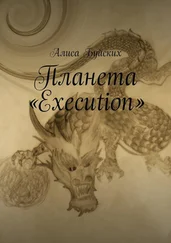It was winter and the cold was severe. The paths and the roads of the village were snowbound. The victim had to walk through the night across the village, leaving behind a trail in the deep snow; hence, the name “path treading.” This method was used by the officials in accordance with an obviously prearranged schedule. About five farmers of our Hundred had to go on this “path-treading” walk every night; and as many as forty or more farmers from other Hundreds visited our Hundred. A panorama of our village on one of these nights would have shown about forty wretched farmers, shivering from cold and exhaustion, slowly moving through the darkness and waist-deep snow.
At dawn, the path treader would return home from his night-long walk, only to find a new summons from the Hundred for the next night. The program for the next night was somewhat different. First, he would be kept waiting for a few hours, and then be subjected to the usual interrogation. Had he changed his mind? Was he going to join the collective farm now? Some said yes, but the majority repeated their “no!” As before, the farmers tried to find some excuses, but now the officials refused to listen to them; they had no time. Would the farmer wait for a while? Of course, he had to wait, but not in the house; it was overcrowded. The shed was empty—well, almost! There were only five or six other farmers there, and so the victim would suddenly find himself in a cold shed that was locked from the outside as soon as he entered.
This kind of persuasion became known as the “cooling off” method. Cold, humiliated, and exhausted from lack of sleep and from harassment, the farmers would wait for hours. In the cold darkness of the shed, some would begin to realize the hopelessness of their resistance.
A few hours would pass, and the functionaries would bring the farmers, one by one, into the office and tell them to sign the application. The majority still refused. So, singly—they could not go in a group—they would again be sent “path treading.” This would be repeated the next day, and the day after that until the men, exhausted physically and broken in spirit, would submit to the officials’ demand. Every victim’s place in the shed and on the “path treading” would then be taken by another villager.
The inhabitants in some other Hundreds experienced still another method of persuasion. One day we heard a story about events taking place in the Second Hundred. The Party functionaries of that Hundred had entered into “socialist competition” with Hundred Seven for the speedy fulfillment of the collectivization quota. During a meeting at which the farmers still stubbornly opposed the collective farm, the chairman of the Hundred ordered a fire to be lit in the building’s stove. Then he ordered the stove damper closed. He posted a guard at the door and left the hall. After a while, a few farmers dropped to the floor semiconscious. Finally, someone broke the window.
Whether that chairman finally met his quota is unknown. But the man who broke the window was later tried in the People’s Court for “interfering with an official’s duty,” and for “inflicting damage upon socialist property.” He was sentenced to a hard labor camp for ten years and was not heard from again.
Evening and Sunday meetings were extremely humiliating and torturous experiences in our lives. They had undoubtedly been designed not only for the purpose of political and ideological brainwashing, but also as a means of breaking the farmers’ spirit of independence. The meetings were to be channels through which the Party could direct farmers towards collaboration with the Party officials in fulfilling the task of collectivization. Party propaganda termed these meetings “mass participation in socialist government.”
These meetings played a crucial role in driving the farmers into the collective farms. The meeting would usually start with a long speech about the methods of collectivization. There would follow short speeches, after which some time was allotted to questions and answers. The meeting chairman would then announce that a debate would follow. Of course, these debates were nothing more than small speeches by functionaries and other activists, for no villager would take part in them. We had no choice but to listen until we became stupefied.
Finally, the chairman would announce the next point on the meeting’s agenda. This was the summary of the “socialist competition” during the previous week. Every adult was forced to take part in the competition for speedy fulfillment of the collectivization quota.
Our village as a whole competed with a neighboring village. Our Hundred competed with Hundred Eight and also with its own counterpart in the neighboring village. All functionaries competed among themselves as officials and as individuals, and all villagers were also supposed to compete among themselves.
The chairman of the meeting on competition would tell his audience the village’s standing in the competition. And no matter what progress was achieved, the officials were never satisfied; so, consequently, we were blamed, scolded, and threatened. Only one hundred percent participation would satisfy them.
Then the chairman would call upon the head of the Hundred to make a report about his Hundred’s standing in comparison with its rival and the other village Hundreds. If our Hundred happened to be among the leading ones, then we could hope to go home sooner. But when our Hundred was behind, we would prepare ourselves for another lecture about the importance of the “socialist competition.”
The result of the competition within and among the Tens and Fives was also carefully analyzed. The winner subunits, that is to say, the Tens and Fives that collectivized the most farmers during the last week, would ceremoniously be presented the Red Banner and their functionaries would be proclaimed Shock Workers, and officially commended for their good work. The loser subunits together with their functionaries, would be listed on the chorna doshka , literally, “black board,” which was supposed to be a great disgrace. The least successful subunits could expect to see their names written on pictures of a turtle or a crocodile. The turtle represented slowness, and the crocodile viciousness. The “crocodiles” had the worst part of the whole affair. They were treated as enemies of the Communist regime or, worse still, as saboteurs. Usually these individuals were transferred to other subunits either within or outside of their Hundred with the warning that repeated failure would be followed by arrest or banishment.
The report of the subunits over, the meeting would continue with the report about individual competition. First, the functionaries competed among themselves for larger numbers of collectivized farmers. All of them were forced to take commitments upon themselves in the following manner: a functionary would announce in a stereotyped sentence that, realizing the advantage of the collective system, he solemnly promised the “dear Party and government” to collectivize so many farmers by the next Sunday meeting. Then he also challenged Comrade So-and-so to surpass that goal. The challenged one had no choice but to accept the challenge, and so a chain reaction would start.
Among the villagers, the nature of the competition was a little different. During the week prior to Sunday, the officials would take care to “prepare” some farmers. At the Sunday meeting, these farmers would duly rise and utter memorized phrases about how happy they were to join the collective farm; they would then challenge Comrade So-and-So (a farmer) to do the same.
At the Sunday meetings, the challengers and the ones challenged had to give accounts of their various competitions. A functionary had to report how many farmers he had collectivized since the last meeting. The lucky ones were praised; the losers were reprimanded. They were then warned to do a better job by next Sunday, or else bear the consequences.
Читать дальше












